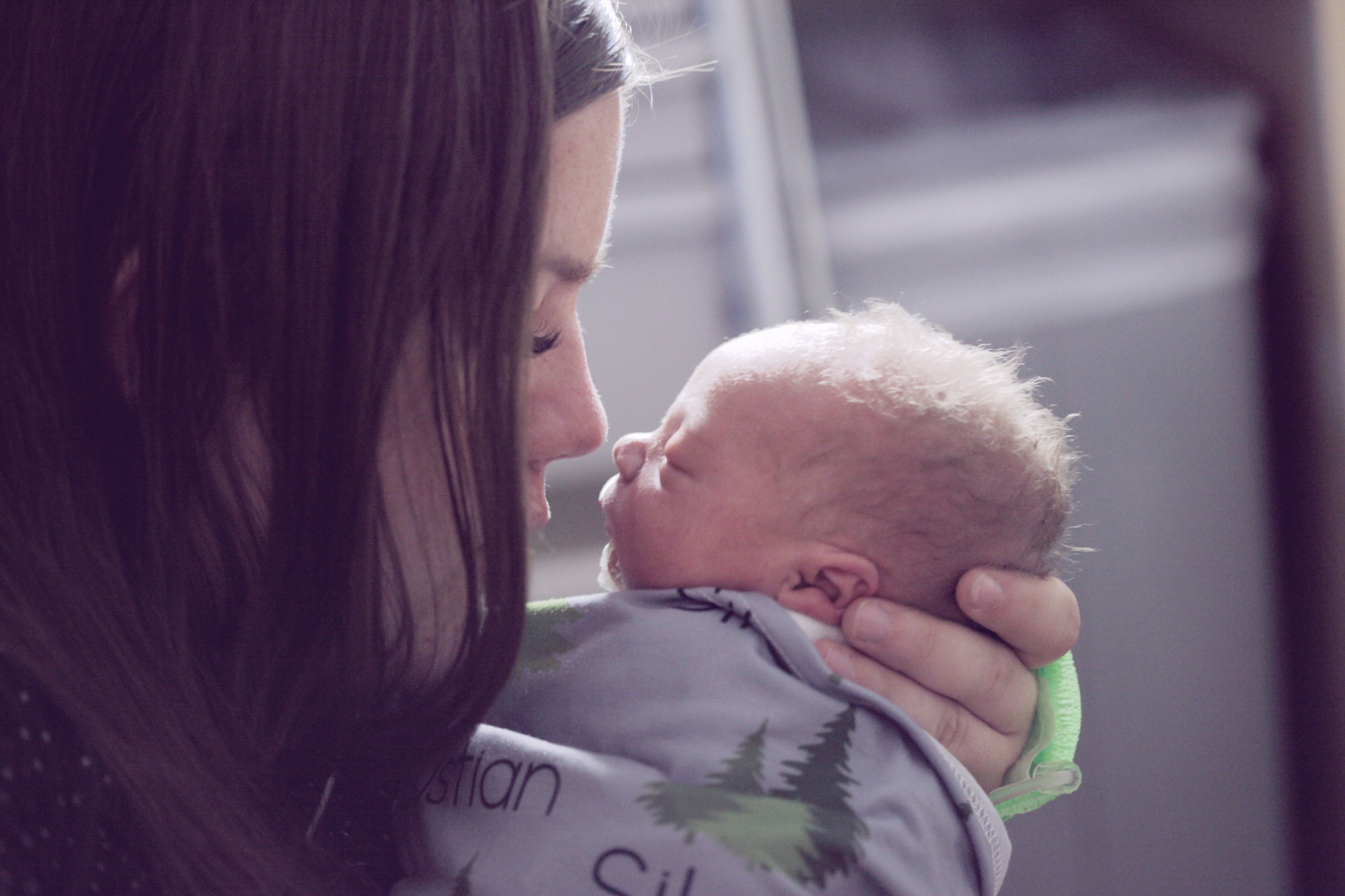The Physiological Reasons Behind the First Cry
The First Breath of Life
The baby’s first cry is typically tied to their initial breath. Inside the womb, a baby relies on the umbilical cord to receive oxygen-rich blood from the placenta. However, at birth, the baby must transition to breathing independently. This transition involves:
Clearing Fluid from the Lungs: During pregnancy, the lungs are filled with amniotic fluid. At birth, the process of crying helps expel this fluid, allowing the lungs to inflate and facilitate air intake. It’s like giving the lungs a healthy kick-start, preparing them to function autonomously.
Activating the Respiratory System: The cry initiates the baby’s respiratory system, expanding the lungs and enabling the flow of oxygen into the bloodstream. This is a fundamental change, as the baby shifts from a liquid to an air-based oxygen supply.
The Role of Surfactant
A crucial component in this respiratory transition is a substance called surfactant. Surfactant lowers the surface tension in the alveoli, the tiny air sacs in the lungs, preventing them from collapsing and helping them remain inflated. Babies begin producing surfactant around the 24th to 28th week of pregnancy, but full-term babies have a sufficient amount at birth. The act of crying further assists in distributing this surfactant evenly across the lungs, ensuring proper lung function.
Circulatory System Changes
A newborn’s circulatory system must also adapt at birth. Before birth, the baby’s blood bypasses the lungs via the ductus arteriosus and foramen ovale, two fetal blood vessels. The first cry helps close these pathways and redirects blood to flow through the lungs, enabling efficient oxygen exchange.
Transitioning from Fetal to Neonatal Circulation
The transition from fetal to neonatal circulation is quite remarkable. In the womb, blood oxygenation occurs in the placenta, not the lungs. When a baby cries at birth, it helps close the fetal shunts – the ductus arteriosus and the foramen ovale. This process ensures that blood starts flowing through the lungs for oxygenation. The pressure changes in the heart chambers caused by the baby’s first breaths and cries drive these closures.
Stimuli from the Delivery
The birth process itself, whether through natural vaginal delivery or C-section, provides a series of stimuli that can trigger crying:
Temperature Changes
The sudden exposure to a cooler external environment can shock the baby’s system, prompting a cry as their body adjusts. The womb is like a warm, cozy cocoon, and entering the cooler air of the delivery room is a stark contrast. This drastic temperature change sends signals to the baby’s brain that trigger a cry, helping them adapt to the new environment.
Physical Sensations
Contact with air, touch, and gravity creates a cascade of new sensations for the baby after the confined, warm environment of the womb. Imagine being enveloped in a snug sleeping bag and suddenly being exposed to open air—this is somewhat what the baby experiences. Crying helps them process this sensory overload.
Handling by Medical Staff
Routine post-birth procedures like suctioning the airway or clamping the umbilical cord can elicit discomfort, leading to crying. These actions are necessary to ensure the baby’s airway is clear and to stimulate the baby’s breathing, but they can be startling or uncomfortable, prompting a cry.
Psychological and Emotional Aspects
Communication and Bonding
From the very beginning, crying is a newborn’s primary means of communication. The first cry reassures medical staff and parents that the baby’s lungs are working well, creating an immediate emotional bond. This early form of communication lays the groundwork for the baby’s later ability to express hunger, discomfort, and other needs.
Building Early Connections
The sound of a baby’s cry has an instinctual effect on parents, often triggering a nurturing response. This initial cry is a first step in a lifelong communication journey, establishing a connection and signaling the baby’s needs and presence.
Stress and Relief
Birth is a challenging and stressful process for a baby, requiring immense physiological adaptation. Crying after birth can serve as a release of stress, a way for the baby to adjust emotionally to the sudden, overwhelming change in environment.
The Role of Crying in Stress Regulation
Crying helps regulate the baby’s stress hormones, like cortisol. By releasing these hormones, the baby can stabilize and begin the complex process of adapting to life outside the womb. This transition is not just physical but emotional, and crying plays a crucial role in managing this stress.
Medical Perspectives on the First Cry
Assessing the Newborn’s Health
The first cry serves as an important indicator of a baby’s overall health. Medical professionals often look for a strong, sustained cry, which suggests that the respiratory system is functioning well and the baby has good muscle tone.
The APGAR Score
A newborn’s cry is part of the APGAR score, a quick assessment tool used to gauge a baby’s condition immediately after birth. It measures five criteria: Appearance (skin color), Pulse (heart rate), Grimace (reflex response), Activity (muscle tone), and Respiration (breathing effort). A strong cry positively impacts the Grimace and Respiration scores, indicating that the baby is adapting well to life outside the womb.
Conditions Affecting the First Cry
Sometimes, babies don’t cry immediately due to specific medical conditions. This could be due to prematurity, difficulty in clearing lung fluid, or birth complications requiring medical intervention. In such cases, the absence of a cry does not necessarily indicate long-term health problems.
Common Conditions Impacting the First Cry
- Prematurity: Preterm babies might have underdeveloped lungs and insufficient surfactant, making it harder for them to cry immediately.
- Meconium Aspiration: If a baby inhales meconium-stained amniotic fluid, it can block the airways and affect the first cry.
- Birth Complications: Factors like prolonged labor or fetal distress can lead to exhaustion or temporary lack of oxygen, delaying the first cry.
The Evolutionary Perspective
Ancestral Roots of Crying
Crying as a survival mechanism can be traced back through evolution. In ancestral environments, a baby’s cry would alert caregivers to their needs, ensuring they received immediate attention and care. This primal response has persisted, signaling that all is well with the newborn and prompting protective behavior from parents.
Crying and Survival
From an evolutionary standpoint, a strong first cry could have been critical for survival. It might have helped infants secure the care and attention they needed, ensuring they were fed, kept warm, and protected from dangers.
Practical Insights for New Parents
Preparing for the First Cry
As a new parent, anticipating your baby’s first cry can be both exciting and daunting. Here are some tips to help you prepare:
- Attend Birthing Classes: These can provide insights into the birth process, including what to expect when your baby takes their first breath and cry.
- Communicate with Your Healthcare Team: Discuss any concerns you may have about the birth and your baby’s first moments with your doctor or midwife.
- Create a Birth Plan: While flexibility is key, having a birth plan can help you feel more in control and prepared for the experience.
Understanding Variations in the First Cry
Not all babies cry immediately after birth, and that’s okay. Here’s what you should know:
- Silent Births: Some babies might be born quietly but can still be perfectly healthy. Medical professionals are trained to assess and ensure the well-being of these babies.
- Delayed Crying: In some cases, mild stimulation or suctioning is needed to encourage a baby to cry. This is a common practice and usually resolves quickly.
Responding to Your Baby’s First Cry
Your response to your baby’s first cry can help establish a comforting routine:
- Skin-to-Skin Contact: Holding your baby close can soothe them and regulate their body temperature and heart rate.
- Gentle Words and Touches: Speak softly and gently touch your baby to comfort them and begin building that vital parent-child bond.
Looking Ahead: The Role of Crying in Early Development
As your baby grows, crying will continue to be their primary mode of communication. Understanding the nuances of different cries can help you better meet your baby’s needs. Pay attention to changes in pitch, intensity, and duration, as these can provide clues about what your baby is trying to express.
Recognizing Different Types of Cries
- Hunger Cries: Typically rhythmic and repetitive, signaling the need for nourishment.
- Discomfort Cries: Often more intense, indicating issues like a wet diaper or being too hot or cold.
- Pain Cries: Usually sudden and shrill, requiring immediate attention.
Supporting Your Baby’s Emotional Growth
Responding promptly and consistently to your baby’s cries fosters a sense of security and trust. This responsiveness is crucial for their emotional development and helps lay the foundation for healthy attachment relationships.
In these early moments, the seemingly simple act of a baby crying is anything but—it’s a complex interplay of physiological transitions, emotional expressions, and survival instincts. As you nurture and respond to this first cry and the many that follow, you’re not only caring for your newborn but also beginning a lifelong journey of connection and communication.




